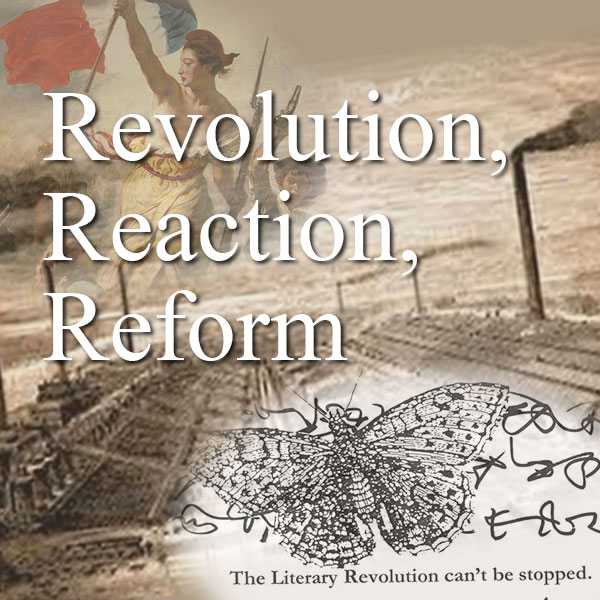Founded in the 12th century, Oxford University has a long history of influential and important members of religion. Many popes and kings have gone to college at Oxford. John Wesley was one of those individuals, who after his Oxford days went on to spark the Methodist movement. Oxford's long history of teaching theology has made it one of the most influential places in religious history.
MSSU ENG272 - Spring 2025 Dashboard
Description
 British Literature II: Revolution, Reaction, Reform examines British literature from the late eighteenth century to the present, a period that witnessed the American and French Revolutions, slave revolts such as the Haitian Revolution, a “revolution in female manners,” the Industrial Revolution, the twentieth-century revolutionary wave in Europe, as well as World War I and World War II, and, of course, artistic revolutions. We will consider how the authors and literary works of this period might be reacting to change, advocating for reform, or participating in literary revolutions—whether revolution is understood in the sense of “revolving” or of “revolting,” going full circle to return to a previous (more perfect?) time or experiencing/effecting a great alteration or rupture.
British Literature II: Revolution, Reaction, Reform examines British literature from the late eighteenth century to the present, a period that witnessed the American and French Revolutions, slave revolts such as the Haitian Revolution, a “revolution in female manners,” the Industrial Revolution, the twentieth-century revolutionary wave in Europe, as well as World War I and World War II, and, of course, artistic revolutions. We will consider how the authors and literary works of this period might be reacting to change, advocating for reform, or participating in literary revolutions—whether revolution is understood in the sense of “revolving” or of “revolting,” going full circle to return to a previous (more perfect?) time or experiencing/effecting a great alteration or rupture.
Access the works for annotations assignments in COVE Studio here: ENG 272, Spring 2025
The digital edition of Frankenstein for annotations and the map project can be found here: Mary Shelley, Frankenstein (1818)
Galleries, Timelines, and Maps
Individual Entries

Though Hailsham is fictional, it’s implied to be located in Norfolk , “the lost corner of England,” as Kathy describes it. The landscape is quiet, green, and unremarkable, but nothing remotely close to the dystopia beneath it. The boarding school sits in near-isolation, surrounded by woods and wide skies, reinforcing both the illusion of safety and the deep loneliness the students carry. It’s a place where art is collected without explanation and where identity is shaped by quiet control. Mapping this setting means locating the root of the deception: the place where the students first learned to make art to prove the essense of their souls. Norfolk becomes a representation for all the places that look peaceful from the outside, but inside, it forces to accept the unaccepted.
"...
more